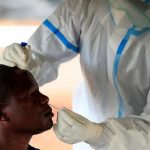 G20 leaders will meet in Rome at the end of October, in part to discuss how to deal with future pandemics. But the truth is that their countries’ actions have largely fueled the current one.
G20 leaders will meet in Rome at the end of October, in part to discuss how to deal with future pandemics. But the truth is that their countries’ actions have largely fueled the current one.
Many G20 countries have been COVID-19 super spreaders. Following the coronavirus’s transmission beyond China, which initially sought to quash reporting of the outbreak, the United States and other rich countries chalked up early failures that greatly contributed to the virus’s worldwide spread.
Had they acted sooner, they could have at least slowed its transmission to poorer countries. Worse still, their failure to commit to vaccinating the whole world as quickly as possible has created a self-defeating cycle where more transmissible and harmful variants of the virus are likely to be unleashed.
Statistical models show that international air travel was the key factor in the global spread of COVID-19 until early March of last year. This is borne out by the charts, which detail the spread of the Alpha variant (also known as the UK or Kent variant) and the frequency of air travel to different countries from London airports in October 2020. Prominent in the Alpha variant’s spread were Spain, Italy, and Germany.
Data from earlier in the pandemic enable us to see how different viral strains emerged over time. If we put this information alongside data from the Oxford COVID-19 Government Response Tracker (OxCGRT) regarding government policies, we can pin down the details of disease spread. Among G20 countries, the failures of the US and the United Kingdom stand out.
New York was one of the early super-spreader cities. It recorded its first confirmed COVID-19 case on February 29, 2020, about a month after the US restricted travel from parts of China. But even though COVID-19 was raging in Italy, the US introduced restrictions on people arriving from mainland Europe only on March 13, two days after the World Health Organization declared a pandemic; and not until March 16 did it extend these to arrivals from the UK and Ireland.
The viral sequence data demonstrate that the virus did not move directly from China to New York. Instead, US hesitancy to clamp down on travel from Europe was largely responsible for multiple introductions of the virus, which seeded the city’s huge death toll.
Moreover, interstate travel within the US largely continued during lockdowns. OxCGRT data show that 17 US states have never stopped it since the pandemic hit. The similar mix of viral lineages from early in the pandemic across the US indicates that reintroductions of the virus were common even in places that had eliminated an original strain. Research combining air-travel data and genomics has concluded that the spread of COVID-19 within the US resulted more from domestic introductions than international air travel.
The UK was another super spreader with an achingly slow pandemic response, given where and when genomics now tells us the virus was circulating. In that regard, the COVID-19 Genomics UK Consortium (COG-UK), the largest of its kind in the world, has sequenced more than 26 000 viral isolates from people who caught COVID-19 in the UK’s first wave, and compared these sequences with those from other countries.
Continued next page
(122 VIEWS)

